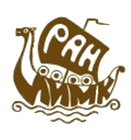Kostenki 14 etched bone
c.32,000 years old
Excavated primarily by A.N. Rogachev in the 1950s and by A.A. Sinitsyn 1999-present, Kostënki 14 is Eastern Europe’s most important site for the period 42-27,000 year ago. The site has at least eight well-stratified archaeological layers that contain animal bones, stone tools and items of personal adornment, as well as hearths and other structures. Among the discoveries at Kostënki 14 is Europe’s earliest modern human burial.
Layer II of Kostënki 14 contains a remarkable series of artefacts crafted from bone, including needles and awls, as well as objects such as this etched piece. The layer is attributed to the Gorodtsovian archaeological culture on the basis of its stone tool assemblage and a characteristic bone paddle or shovel.
(Artefact housed at the Institute for the History of Material Culture [Palaeolithic Division], Saint Petersburg.)








